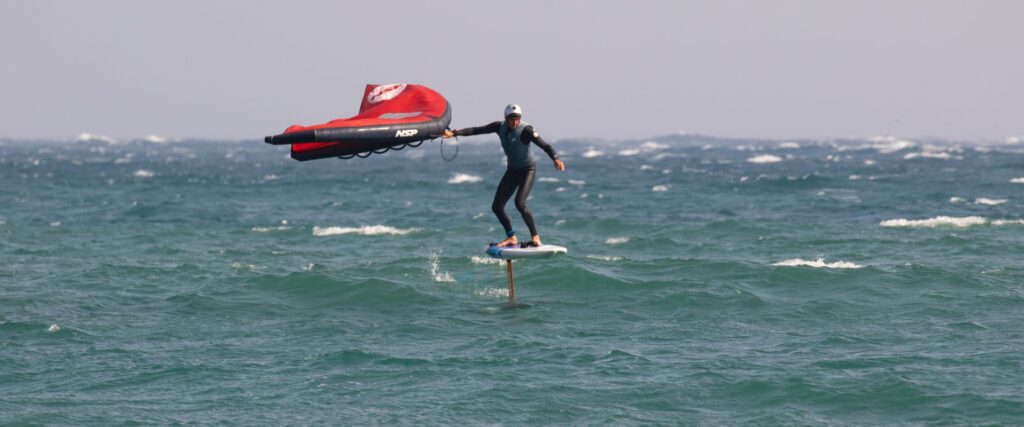On this page, we go into a very important part of wingfoiling. Learning how to handle the wing and control it. At first this feels like something new and strange, but you will learn quickly. How to drive the wing in the direction and position that you want it to be. Then it becomes your second nature: controlling the wing is stored in your muscle memory. Learn all about wing handeling and controlling the wing on this page. Do this before you get into the water with your equipment, and dive into learning how to take-off.
First of all, let’s identify a couple of key elements in the wing: the central handle and the central strut.
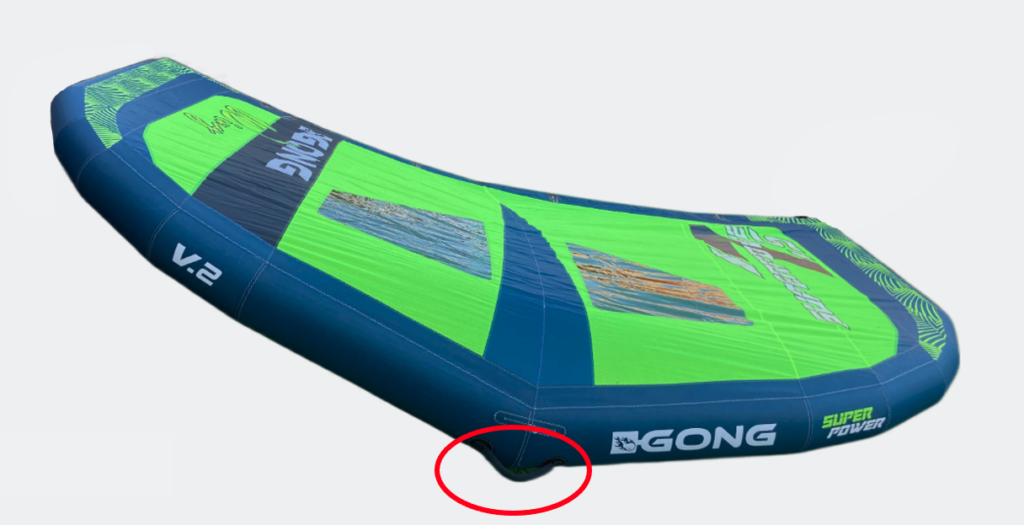
The central handle
On this picture, you see the central handle marked in the red circle. The central handle is your friend. Whether you walk on the beach or just hold your wing, grab it from this handle with one hand. This will allow the wing to be balanced in the air and in your control.
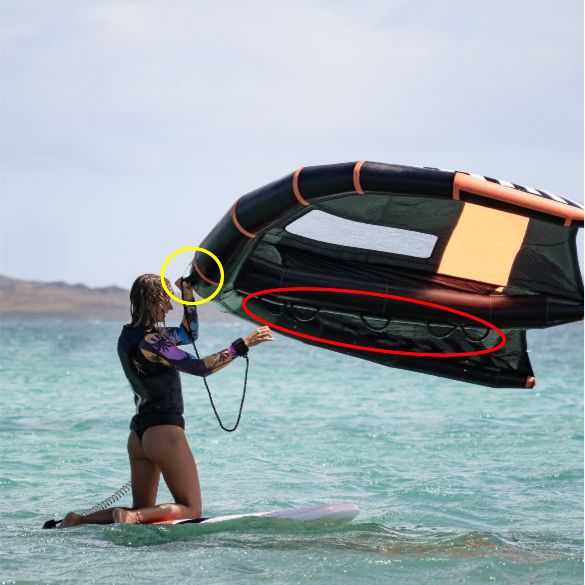
The central strut
In this picture, you see the central handle indicated in the yellow circle.
The red oval indicates what’s called the central strut. The part that goes from the front to the back through the centre of the wing. You regulate the power of the wing by positioning your backhand further to towards the back of the central strut.
As long as you don’t put your hand on the central strut, there is basically no power in the wing.
All wing concepts and terms
The leading edge is the front side of the wing when riding. This is the part that first contacts the air.
The trailing edge is the “end of the wing”, where the air exits the wing.
The central handle is in the middle of the leading edge. You hold the wing here when on land or when riding downwind.
The central strut connects the leading edge with the back and gives the wing structure. It can also be a boom instead of an air filled blatter.
On the central strut are the handles mounted, that you use to hold the wing when riding. The handles can be made from textile or from rigid material as a bar.
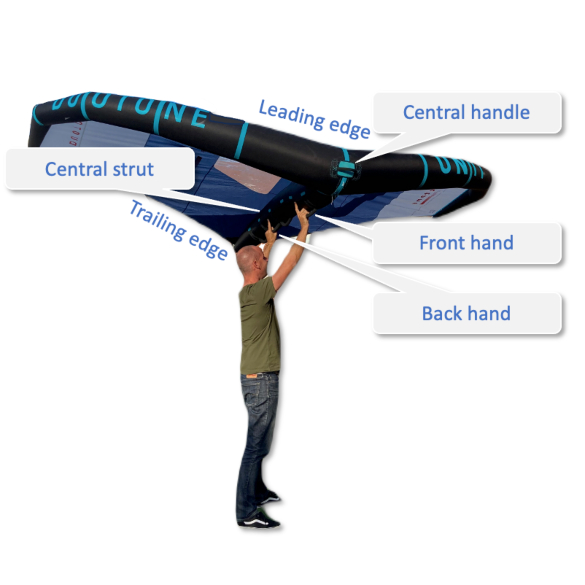
Practical tips about how to handle the wing
Holding the wing while on the beach
Also when you walk on the beach, holding your wing at the central handle is what you want to do. This wing is built so that the central handle is the centre of balance.
Read more about getting into the water with your equipment.

Controlling the wing: using your arms and hands
You want to make sure you understand how your wing reacts to the wind. Also how you can drive it into the position and direction you want it to go. Start by taking the wind in one hand by the central handle. From there, use your second hand to grab one of the grips further down the strut. You will notice immediately that the wing gets more power from the wind.
Your front hand is more in a fixed position, your back hand is used to steer the wing. If you want the wing to go up, you push your back hand down. If you want the wing to go down, you push your back hand up.
Below video from Damien Leroy gives a perfect indication about how to use your arms and hands and how to start on the beach.
Hand positioning and power
In this image, you see the difference between front hand and back hand.
- The front hand is marked in red and is closest to the leading edge and front of the wing.
- The back hand is marked in yellow and closest to the back edge of the wing.
You use the back hand (yellow) to steer the wing up and down, and to close or open it. The front hand is more or less in the same position always.
The more you move your back hand towards the end of the strut, the more power is generated by the wing.
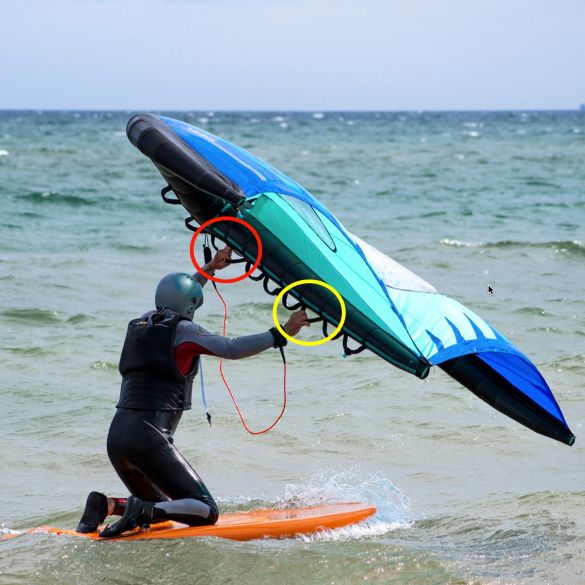
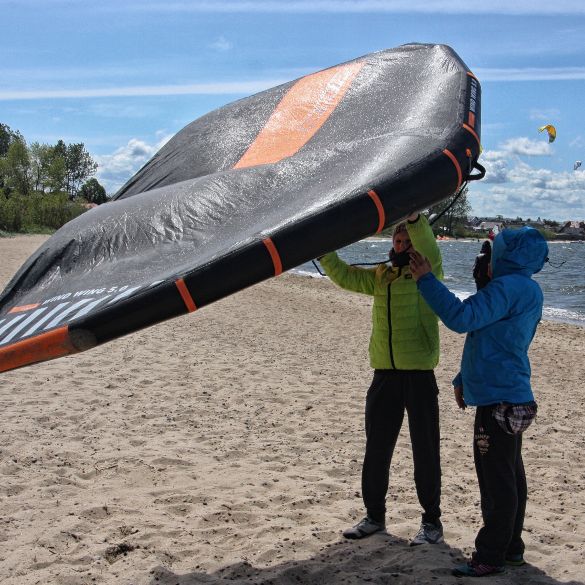
Learn how to handle the wing on the beach
This allows you to focus on the wing and the wing only.
Take the wing, learn how to move it up and down. See what happens if you change positioning of (one of) your hands.
What this does is it allows you to get used to the wing and only focus on the wing.
You don’t have to divide your attention between handling the wing and managing the board, the waves and everything else.
Once you have the wing under control, its a good idea to go into the water with your equipment and start wingfoiling.
Medium power: mostly used
As soon as you learned how to take off, you are out of the water and on the foil. You can decrease the power you get from the wing. This is where you can maintain flight.
The reason is that your board does not have the drag and resistance of the water anymore. So it will speed up.
You decrease the extra speed by assuming the position of medium power. This is the way you probably ride the most amount of time.
Your wing is it an approximately 45% angle with the horizon.

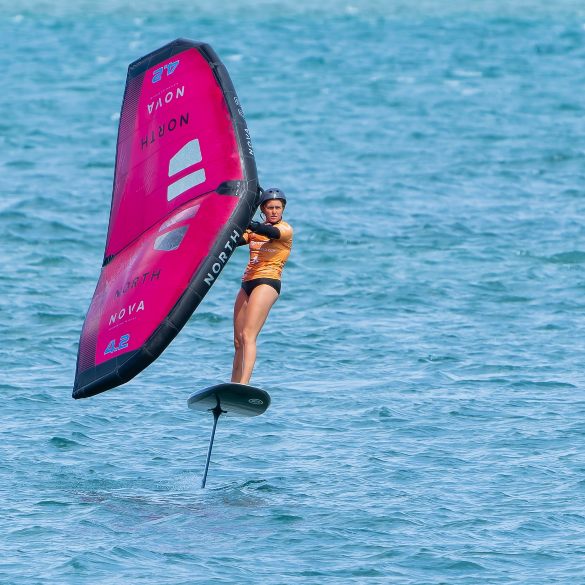
Full power: wing is almost vertical
As you see on this image, the wing is held in an almost vertical position and parallel to the body of the rider. Probably the rider has the arms as widespread as possible, too. By doing those two things, you get the most power out of your wing. A good position when you are in lower wind and in control of your altitude.
Remember these two aspects (holding the wing vertical and keeping your hands far from each other) are the way you get the most power out of the wing.
Minimal power: in case of gusts
If you ride in gusty wind, the way to handle gusts is to lift the wing up above your head. This way, minimal power will come from the wing and the biggest portion of the power of the wind gust will just pass by.
By keeping the wing above your head, the wind will actually pull your body up a bit, helping you to fly even though you lower speed.
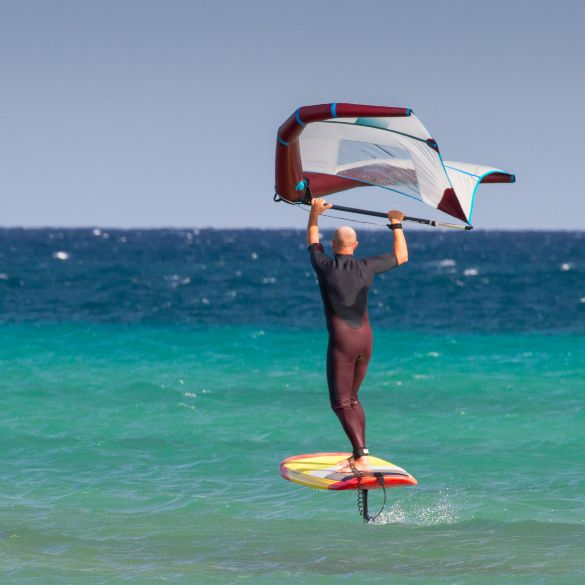
Next level: riding with the wing behind you
Once you reach the level where you don’t even think about how to handle the wing and flying on the foil is a piece of cake, you can start riding by pumping or surfing on the swell and waves. Like a wave surfer, you use the energy of the waves to move forward. You can pump the foil with your feet to keep speed up when needed. At this moment, you do not really need the power of the wind in your wing to go forward. You can “feather” the wing behind you: you grab the wing again from the central handle, and you have it fly along behind you.
As you want to turn back into the wind, you grab the wing back by the power handles and you ride the usual way.
